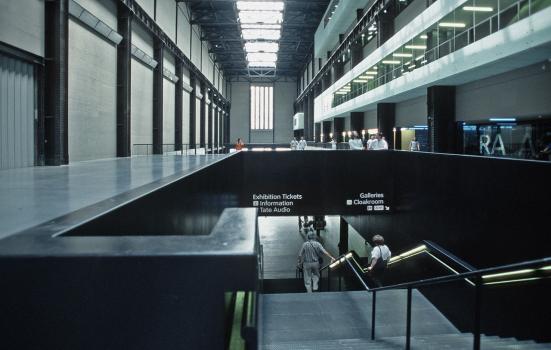Tate's annual report highlights lasting impact of pandemic with more than 180 redundancies made to reduce staff costs by a fifth.

Hans Peter Schaefer
The overall wage bill at Tate has been cut by more than £7m in response to the impact of Covid with more than 180 people laid off across the four galleries, the latest annual report from the government-sponsored body shows.
Figures contained in the report published this week show the overall bill for salaries and wages fell by £7.4m from £41.6m in 20/21 to £34.2m in 21/22.
However, spending on agency staff rose by more than a third (36.4%) from £1.95m to £2.66m. Agency staff spending had previously stood at £3.98m in 2019/20.
READ MORE:
The report said that, due to the pandemic, 2020/21 was "one of the most difficult in Tate’s history", with the closure of galleries continuing into the beginning of the 2021/22 financial year.
"The subsequent resurgence of the pandemic meant continued impact on audiences, and a further period of working remotely during the peaks of the Delta and Omicron variants," it states.
"The full impact of revenues lost during 2020/21 was felt and the unprecedented situation created required the difficult and distressing reduction of Tate’s workforce through redundancies and continued reduction in its programme."
'A tremendous task'
Overall, visitor numbers were still 62.8% down on pre-pandemic levels with 3.07 million in 2021/22, compared with 8.26 million in 2019/20.
"Addressing the financial impact of the pandemic has been a tremendous task," the report states.
"As described in [last year's] report, programmes and activity have been reduced. Most significantly, and painfully, of all, it was necessary to reduce Tate’s overall costs.
"Where possible, this was done without redundancies. However, the process begun at Tate in 2020/21 was completed this year and those who took redundancy departed over the summer and into the autumn of 2022."
There were a total of 181 redundancies - 129 in 2021 and 52 in 2021/22 at a combined cost of £5m.
"Almost all of these taken on a voluntary basis," the report states.
"While this period was distressing, it is testimony to the resolve and spirit of all involved that it was achieved as smoothly as it was."
The average number of full-time equivalent staff during the year was 1,046 compared with 1,288 in 2020/21 - a reduction of 242 staff, or 18.8%.
The report highlights the potential for the reduction in staff numbers being "insufficient to deliver activities" as being one of a number of potential risks for the organisation in the future.
In order to mitigate against this it says a programme of staff engagement and wellbeing was implemented post restructure, including regular pulse surveys, to identify and respond to areas of concern.
It adds that funding applications are expected to be "focused on core activity where possible".
Improved diversity
Despite the difficulties caused by the pandemic, the report highlights areas of progress.
Although audiences levels are yet to fully recover, the diversity of those attending was found to be "broadening", with the report noting that this was a reflection of work done in recent years.
"One of Tate’s commitments is to attract wider and more diverse audiences," the report states.
"Overall, while numbers declined this year, the percentage of audiences from these target backgrounds remained the same.
"Tate will build on these successes in the coming years."
Some elements of the programme were found to have particular appeal for ethnically diverse audiences such as Uniqlo Tate Play, (33% attendence from diverse backgrounds), Kusama (17%) at Tate Modern and Life Between Islands at Tate Britain (19%).




